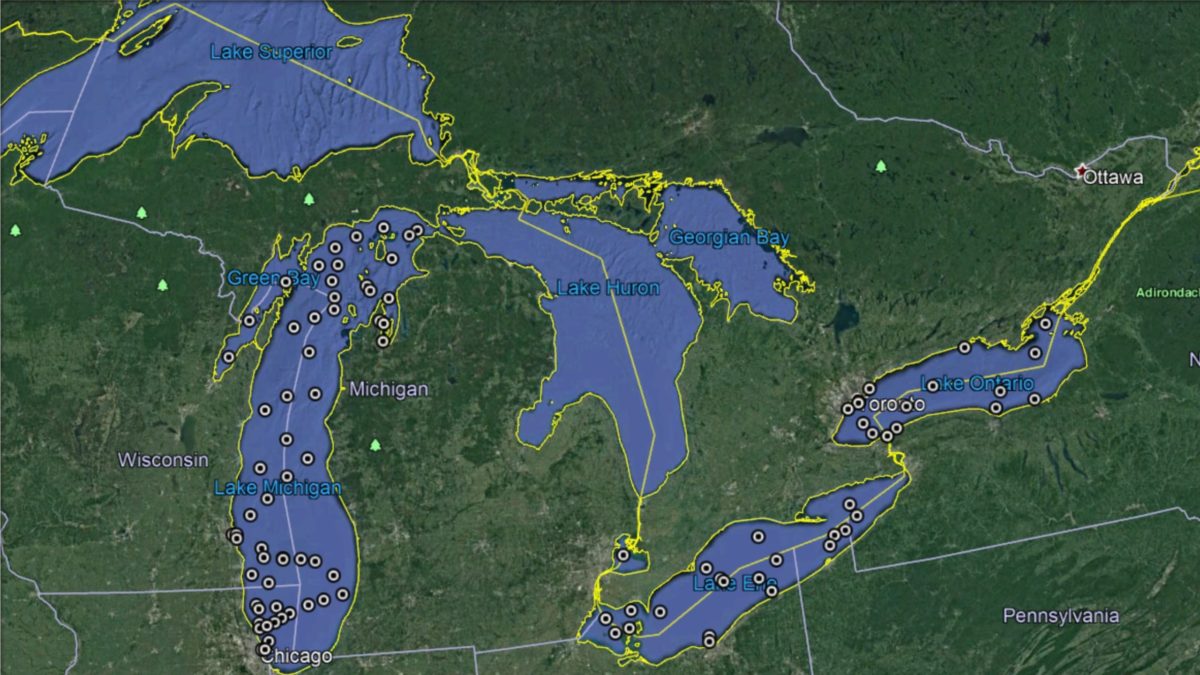Written by: Mark Derco
The great lakes are the largest coalition of freshwater lakes in the world and paramount to the success of the cities that border the lakes. However, the success of the lakes depends on the cities around them. For years industry has been contributing to the pollution of the great lakes and with this research we are looking to fill a gap in knowledge that will help us track the movement of these pollutants throughout the great lakes and in other regions of the United States.
This summer I worked with three amazing students and four incredibly helpful and supportive professors online conducting a meta analysis of primary literature and scientific databases to determine the relationship between microplastics in the environment and persistent organic pollutants.
Initially this project was meant to be an analysis on the effects of microplastics on invertebrates in the Potomac river. However, due to the risks of spreading COVID-19 and the interest of safety we moved from the Potomac Environmental Research and Education Center (PEREC) to our current online format.

Microplastics are as they sound, small pieces of plastic that range in size from 5mm and smaller. Microplastics are typically found in five forms: Fragments, pellets, fibers, films, and foams. Fragments typically are a part of a larger piece of plastic that have broken off as plastic is weathered and becomes more brittle. Pellets often come from industrial sandblasting as well as microbeads in face and body wash. Fibers, also known as lines, generally come from synthetic clothing like polyester or nylon. Films are mainly found in the form of plastic bags. Lastly, foams arise when Styrofoam breaks apart and each of the little foam pieces spreads out into the environment.
Though this project has been interesting and rewarding in its own right it is not without its own challenges. It has become glaringly obvious that there is not a standard method for reporting microplastic collection. We students have found microplastic data reported in weight/volume, particles/area, particles/volume, and weight/area. Unfortunately, not all of these units are comparable, so some data was not able to be included in the meta analysis.
From a personal standpoint the largest challenge I have faced this summer is the routine commitment to the work. When working from home reading academic paper upon academic paper can become tedious and frustrating. However, when that one paper comes along that you know that you can use, the feeling is quite extraordinary. The first few weeks were spent trying to establish a comfortable and productive rhythm that was suddenly lost by not going to an office or lab each day of the week.
We are in the final stages of the data organization and are moving forward to data analysis later this week. Though the numbers have not come back yet the data is looking promising. Each of the pollutants of interest have been found in each region of interest that is also home to microplastics. Hopefully, after sharing our results with the peer instructors the collective decision to move forward is made, we will begin to write up our methods and results with the goal of having our work this summer published.
Mark Derco a rising senior at George Mason University, enrolled in the college of science and majoring in Biological studies and is interested in systems biology and ecology along with environmental policy. Mark can be reached via e-mail at mderco@gmu.edu.

